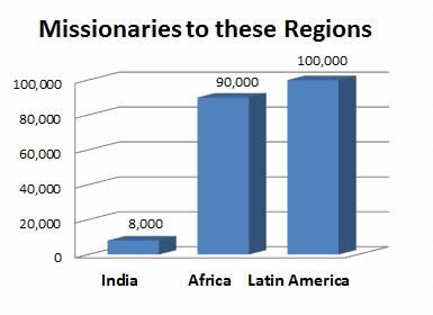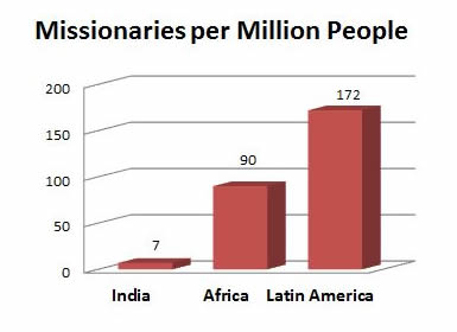12 Months Blocs Spotlight for July 2013
South Asian Peoples With Emphasis on India

 There is an urgent need for harvest laborers to come to India from other countries. Why?
There is an urgent need for harvest laborers to come to India from other countries. Why?
- One-third of the world’s remaining unreached people groups live in India. India’s unreached are an astonishing array of 2,350 peoples with different cultures, languages, castes and religious traditions.
- Half of the world’s largest unengaged, unreached people groups (with populations numbering 100,000 or more) live in India.
- 95% of India’s population belong to unreached people groups.
- India’s population of 1.3 billion is more than North and South America combined (900 million) and more than Africa and the Middle East combined (1.26 billion). Outsiders see India as one country, but with one-fifth of the world’s population, it should be considered the eighth continent.
- India has a booming economy, but 40% of the world’s poorest people (and 70% of these are Muslim). A recent report by the Oxford Poverty and Human Development Initiative indicates that eight Indian states have more impoverished people than 26 of Africa’s poorest countries combined, totaling more than 410 million people.
 Many ask, “Shouldn’t India’s Christians reach India?”
Many ask, “Shouldn’t India’s Christians reach India?”
- India has less than 50 million evangelicals (4% of the population), mostly in the far northeastern and southern states. India’s central and northern states, where the bulk of India’s population lives, have very little Christian presence. By comparison, Africa has 360 million evangelicals (35% of the population), and North and South America have 440 million evangelicals (49% of the population).
- India’s evangelicals speak only a few of the 1,500 languages needed to effectively communicate the gospel in India. We must encourage cross-cultural outreach by the Indian Church, but India needs far more cross-cultural workers than the Indian churches can realistically provide. Prejudice is also a problem, both toward and by Indian Christian communities. Only 10% of the languages of India have any scriptures, but Indian believers, who control the Bible societies, struggle with accepting the validity of translations in neighboring languages.
-
 India receives only 6% of the world’s full-time Christian workers, including 8,000 foreign missionaries (7 missionaries per million), most of whom work with the Indian Christian population. By comparison, Latin America (with less than half the population of India) receives over 100,000 foreign missionaries, or 172 missionaries per million people. Africa receives over 90,000 missionaries, or more than 90 missionaries per million people.
India receives only 6% of the world’s full-time Christian workers, including 8,000 foreign missionaries (7 missionaries per million), most of whom work with the Indian Christian population. By comparison, Latin America (with less than half the population of India) receives over 100,000 foreign missionaries, or 172 missionaries per million people. Africa receives over 90,000 missionaries, or more than 90 missionaries per million people.
(These statistics are from Joshua Project, The Atlas of Global Christianity and Operation World.)









comments